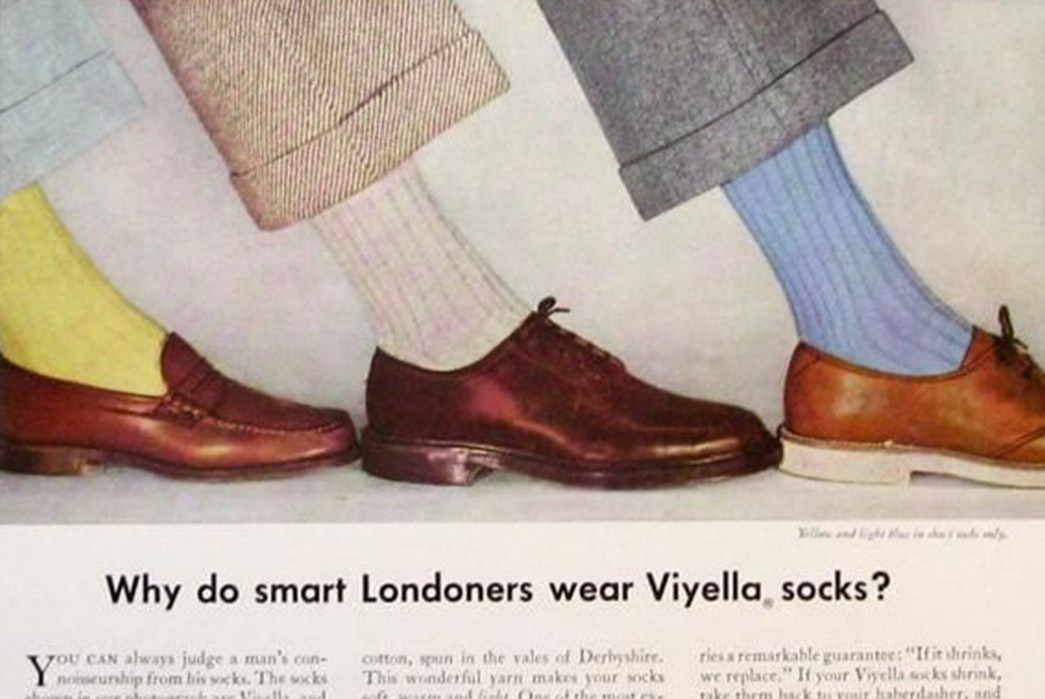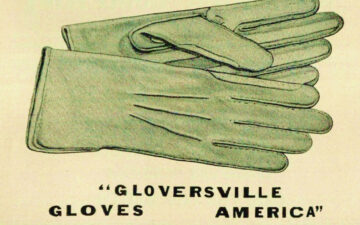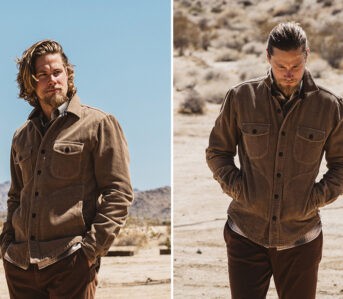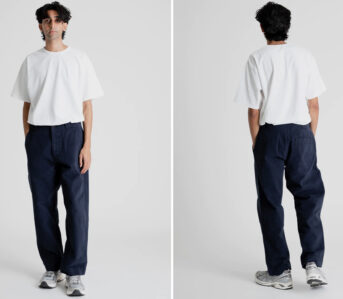Socks are one of those garments that most of us take for granted. In the modern day, they are seen as disposable by the masses – simply a formality worn to protect the foot. Heddels readers will know that we take socks seriously, but even we haven’t dived into the history of these daily essentials.
The history of socks is decidedly less humble than our perception of the daily foot covering, spanning back farther than Dark Age England. Following our coverage on socks with articles like The Three Tiers of Socks: Entry, Mid, and End Level and Wear &Repair – How to Hand Darn Socks, we’re looking back at the history and development of socks from their earliest days.
Foot Wraps, Open Toes, and Matted Animal Hair
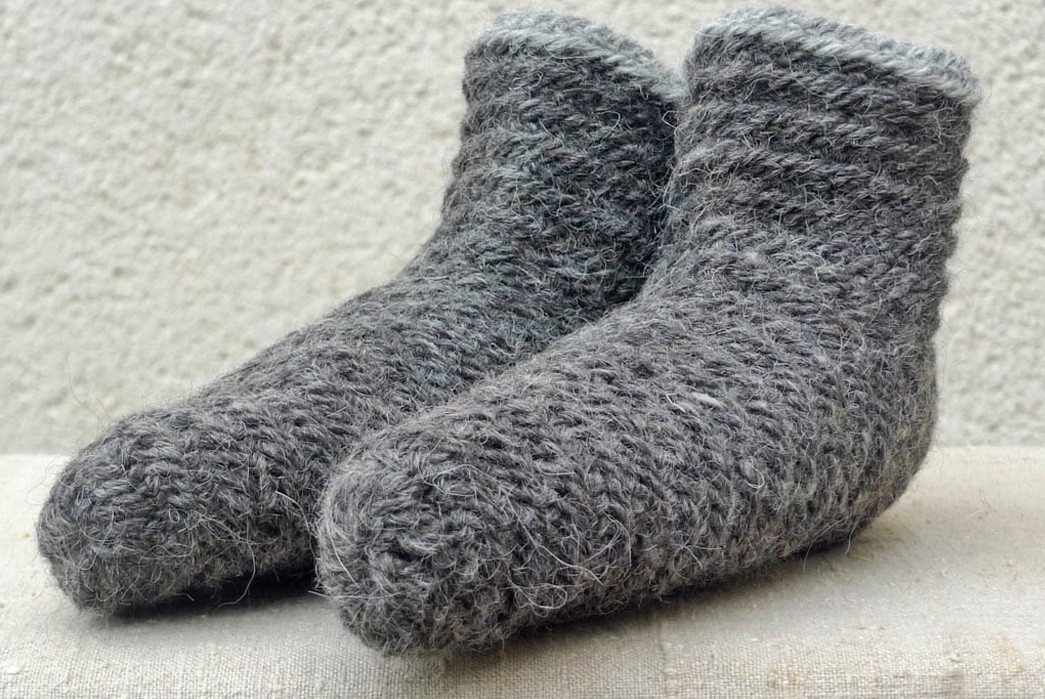
Reproductions of medieval long socks. Image via Marchand Medieval.
As is the case with many Old English derivatives, the word sock sounds very similar to the Old English “socc,” which meant a light slipper. You could find clothing items in Anglo-Saxon Britain that resembled modern socks, specifically heavy-weight winter boot socks. These foot coverings were used for warmth only by the wealthiest individuals because they were very valuable. As it turns out, producing socks before the invention of mechanized knitting in the 16th century was extremely labor intensive. The shape of the human foot requires some complicated hand stitching. “Soccs” were predominantly made out of wool, and were probably very itchy, so by the early medieval luxury footwear would probably suck by modern standards.
Just as with the etymology of the word sock, the history of the garment goes back much farther than Dark Age England. Anglo-Saxons got the word “socc” from the Latin “soccus,” which was a light, low-heeled shoe often worn by entertainers. The Romans got the word from the Greeks, who had a kind of light sandal called a “sykkhos.” From there, Sock’s lineage can be traced back even further to Phrygian and other ancient Asiatic languages for foot coverings. However, these words were used to describe sandals and other shoe-like items before Old English.
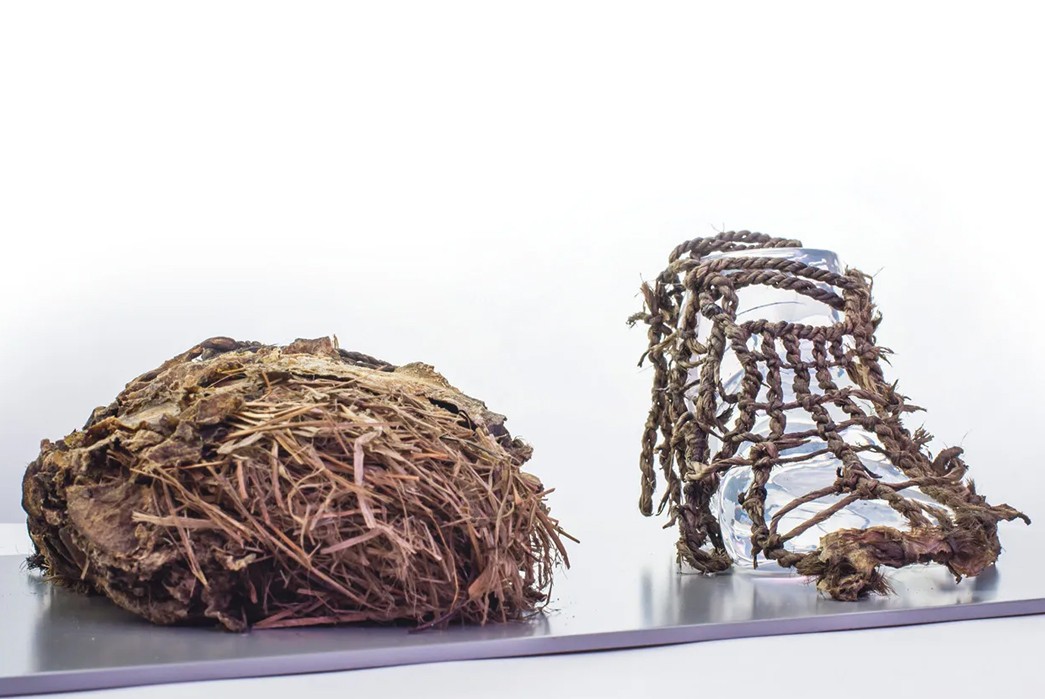
Otzi’s Bronze Age footwear. Image via The South Tyrol Museum of Archaeology.
Humans have covered their feet with animal hides since as far back as archeological records indicate, and presumably much longer before that. Hides and furs were often wrapped with leather bands to keep them in place. We know from Otzi the Iceman – a Bronze Age man found frozen in an Alpine glacier – that humans were stuffing their hide boots with straw for insulation long before the invention of socks. This likely helped with cushioning and sweat absorption as well.
The earliest known example of anything that could be considered sock-like in the historical record is the “piloi” worn by Ancient Greeks. We don’t know exactly what they looked like because natural fibers don’t last more than a few centuries in the Mediterranean. Thanks to a mention by Hesiod, we know that they were made from matted animal hair and worn to protect your feet. The material was likely similar to early felt, which was a fabric made from matted animal hair. In fact, the Catholic story of Saint Clement and Saint Christopher mentions how the two men wore wool foot coverings to protect their feet while fleeing from Roman persecution during the 1st century AD. According to the tale, sweat and friction from their feet turned the wool into felt.
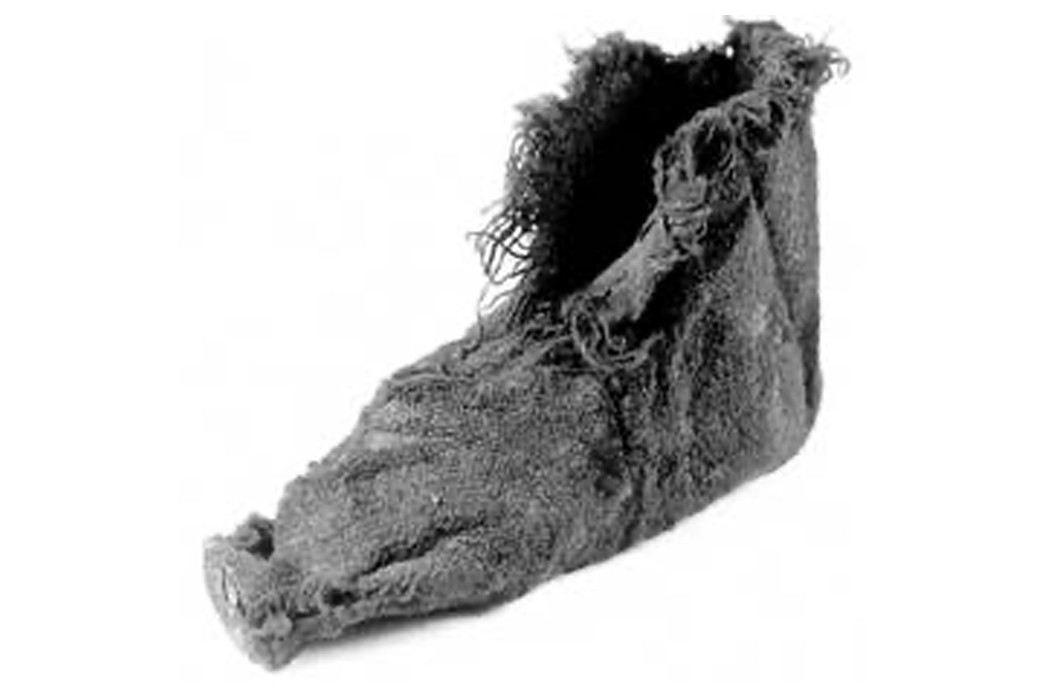
A surviving example of an udone worn by Roman soldiers. Image via Roman Britain.
Evidence from the 2nd century AD, including a fresco and written accounts, describe knitted garments that look like socks with an open heel and toe. These were at least worn by Roman soldiers and the Praetorian Guard. Known as “udones,” they were worn under sandals to protect feet from chafing and probably provide some warmth. Only recently has physical archaeological evidence been found to substantiate these proto-socks.
However, for most of recorded human history, the role of socks has been played by various forms of footwraps. Single pieces of fabric that can be folded or wrapped around the foot are far easier to produce, and therefore accessible and replaceable for most people. Roman soldiers and Greek elites could afford their fancy sandal liners but most people were trotting around in simple foot wraps. In colder environments, especially in the snow, footwear didn’t change much from the Bronze Age to the Middle Ages. It was all hides, furs, and leather.
Puttees and the Pious

A depiction of King Edgar of England wearing puttees from 966 AD. Image via Wikimedia.
Around the 5th century, when Christianity was becoming a dominant socio-political force in Europe, specific footwraps were worn by men to show off their devotion to the faith. Puttees, as they were called, were single ribbons of fabric that were wrapped around the foot and leg. They started at the toes and often went as night as the knee. The exact connection between puttees and piousness is unclear but it may have something to do with foot wraps being a cheap leg covering that poor people wore.
Puttees became an accessible and abundant stand-in for socks from the 5th century all the way until the late 20th century. Long strips of fabric were easy to come by and, even after the Industrial Revolution, easier to produce than socks. Puttees remained a standard issue in military uniforms throughout the world because armies may run on their stomachs, but they march on their socks.
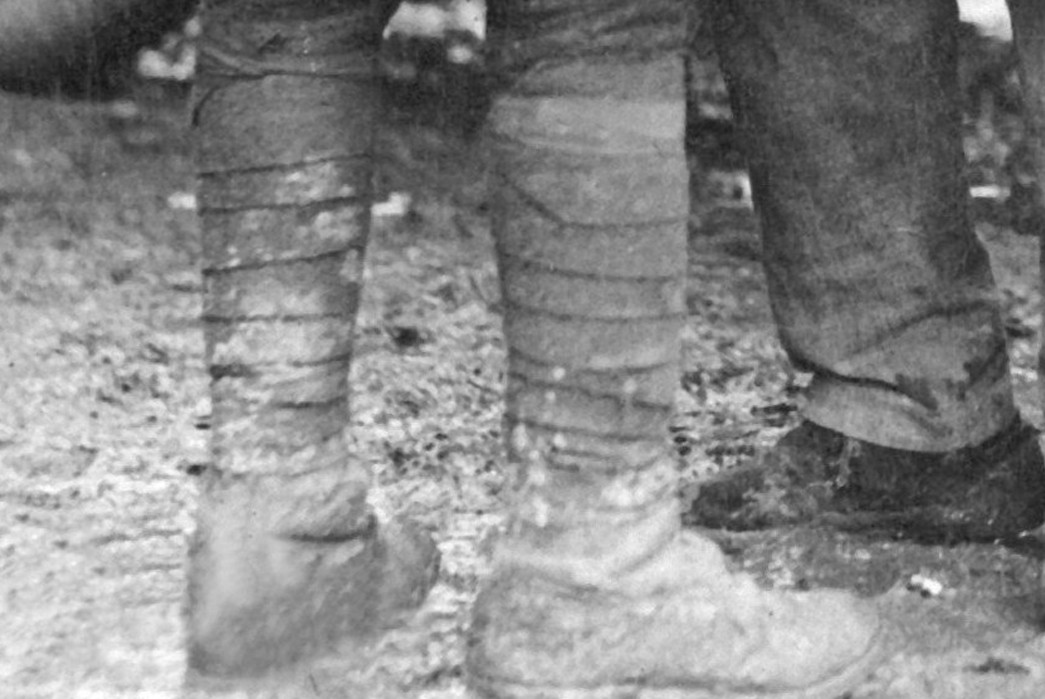
A close up of WWI putees from 1918. Image via Wikimedia.
From the American Revolution and Civil War to the Napoleonic Wars and WWI, history is filled with countless horror stories resulting from socks being in short supply. It seems that soldiers wear out socks pretty quickly, so when massive armies are mobilized, manufacturing capabilities cannot keep up. This is why puttees were the socks of choice for military use until modern times. They were standard issue for the British Khaki service uniform from 1902 to 1938, and renowned British mill Fox Brothers were the largest supplier of puttees for the English Army during WWI.
Mechanization and Modernization
-
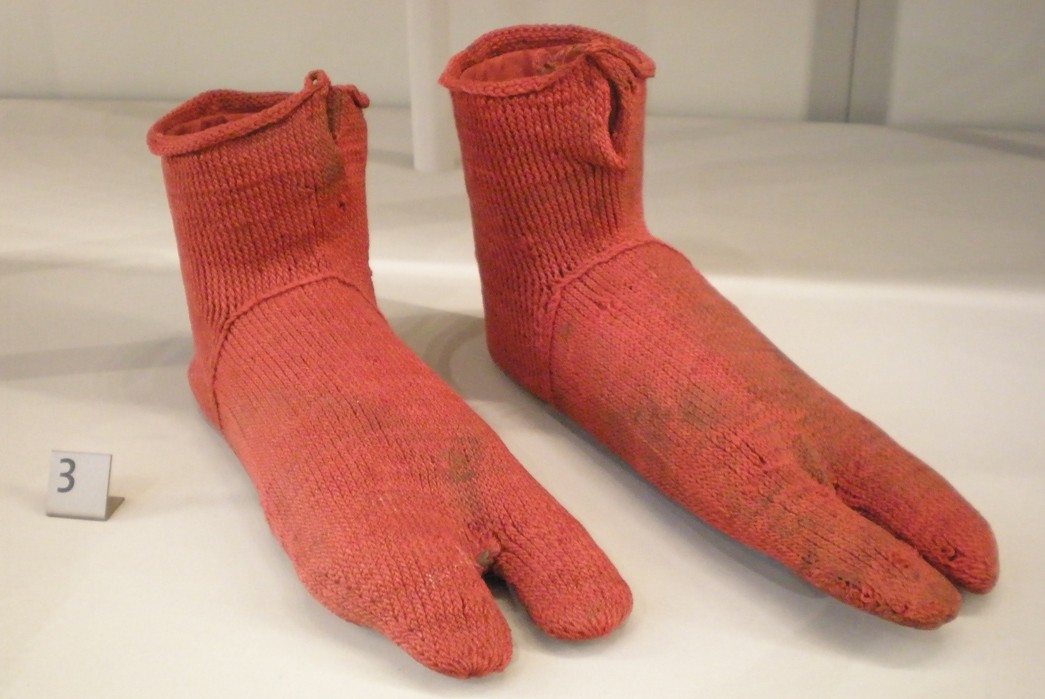
“The earliest known pair of socks, created by nalbinding. Dating from 300–500, these were excavated from Oxyrhynchus on the Nile in Egypt” Photo via Wikimeida/The Vitoria and Albert Museum.
The oldest surviving example of a proper sock was found in Egypt and dated to somewhere between 300 and 500 AD. Other than a split-toe design to accommodate sandals — yes, socks and sandals were fashionable in antiquity — they look like a nice pair of modern socks. We know that a single-needle knitting technique was used to make them, which means that they were time-consuming to produce and therefore luxurious. This was true of pretty much all socks until the twentieth century.
Socks were a luxury of the wealthy from at least the fourth century until the invention of mechanized knitting in the sixteenth century. From that point on, wool socks became affordable to the masses but only on an individual scale. Meaning that most people owned one or two pairs of socks at a time and likely fewer pairs in a lifetime than you have in your sock drawer right now. As gross as it sounds to us now, socks were worn for days on end before being washed and put right back on. If any damage occurred, they were darned and patched until threadbare and unwearable.
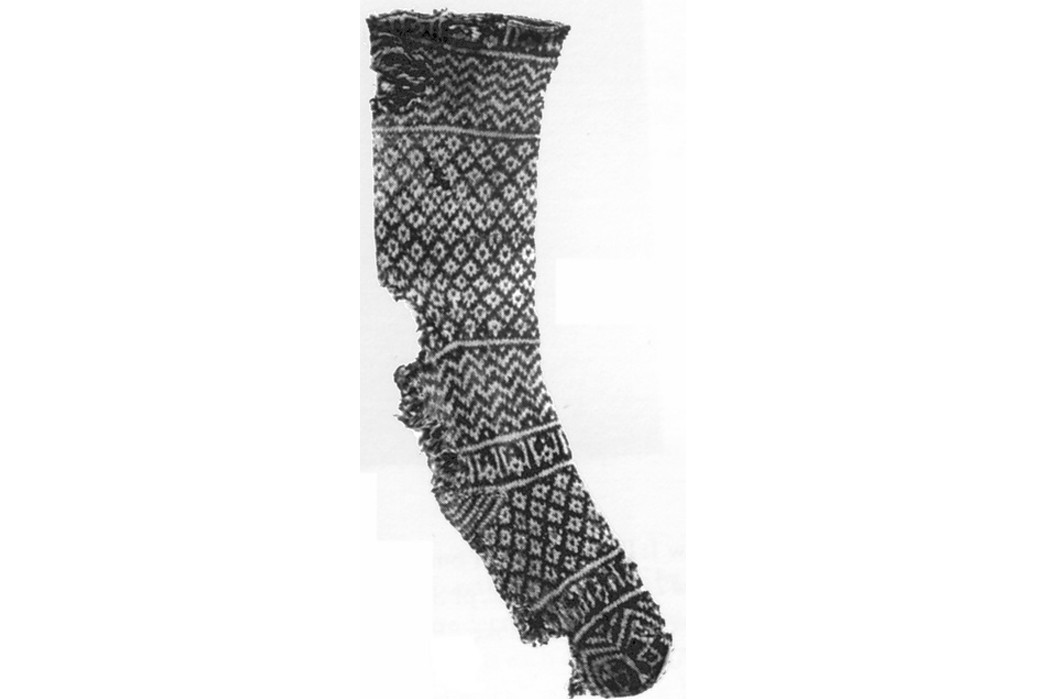
Medieval Muslim socks recovered in Egypt. Image via Ravelry.
For wealthy Europeans, wool socks were a utilitarian assistance but cotton and silk were used for bougie hosiery. Coinciding with the invention of mechanized sewing in the sixteenth century, Europe received a steady stream of silk from China and cotton from India. These costly textiles from the other side of the world were worn as a flex for Europeans of means. A stark contrast to the pious puttees of a few centuries prior.
High-end socks these days are usually made from cashmere, with some silk occasionally incorporated. Cotton has gone from elitist to the footwear fabric of the masses. However, it was the proliferation of petroleum-based fabrics like nylon and polyester that really changed the sock game during the late twentieth century. Socks are now so cheap and easy to produce that they are seen as disposable in most cases, which has actually become a problematic mindset.
Invest and Repair
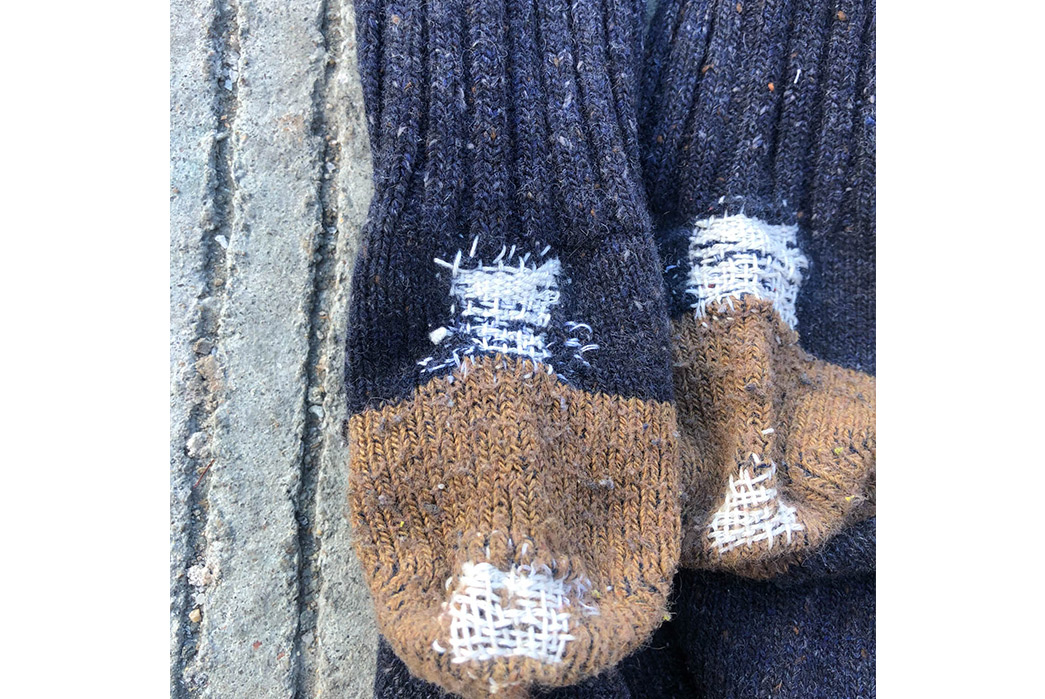
A shot from our sock repair tutorial.
We’ve come a long way since wearing matted animal hair on our feet. Anyone who owns a cat or dog knows how gnarly that must have been. Polyester and other synthetic fabrics, along with computerized knitting machines, have made socks ridiculously cheap to mass produce. Purpose-designed socks exist to optimize performance for any situation. You’ve got chunky boot socks for the winter, padded ankle socks for running, featherweight no-show socks for the summer, and fine wool socks for suiting. Most men possess more socks than they realize – count your collection and you will likely be shocked. While this is good for our feet, it isn’t the best for our environmental impact.
Making a few simple adjustments to your perception of socks can make a difference in the long run of how much garment waste you send out into the world. To begin with, take a more medieval approach to socks. This isn’t to say that you should wear the same pair of heavy wool socks all week. Rather, you should take some appreciation in the socks that you own. Think of them like good denim or a nice pair of sunglasses. Invest a little more money upfront to get a higher quality product that will last a long time.
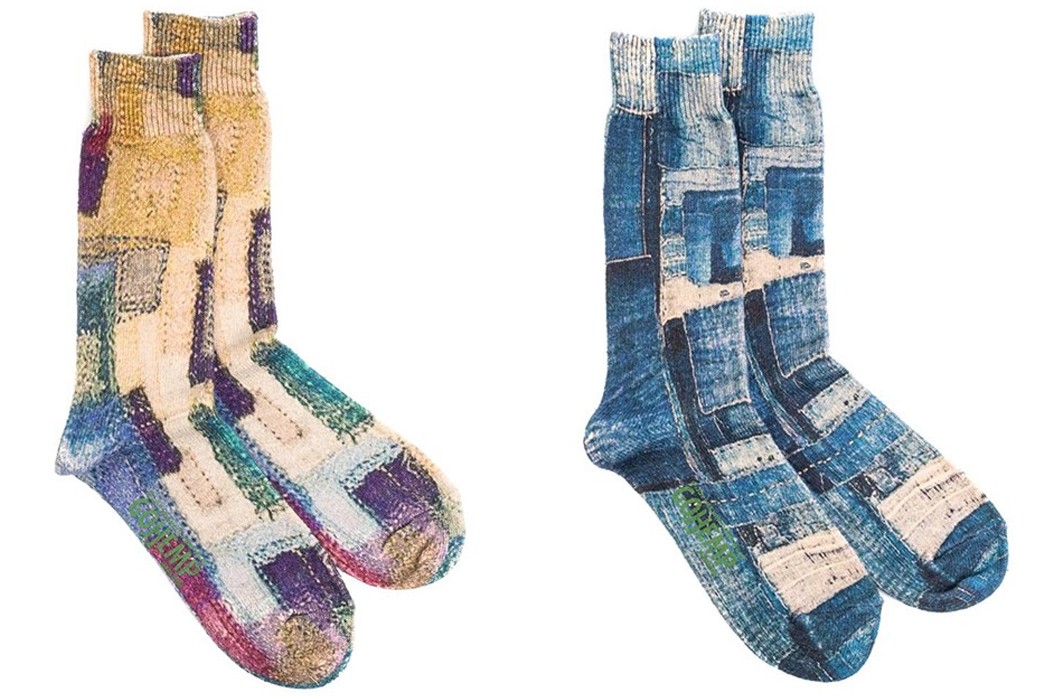
Anonymous ISM hemp socks are awesome! Image via Anonymous ISM.
Pay attention to the material. Polyester and nylon may be inescapable for athletic socks, which is understandable, but you do not need them for everyday socks. Cotton is your foot’s best friend. It breathes better, absorbs sweat much better, and sheds smell in the wash better than any synthetic fabric. Hemp socks are a little pricier but they offer all the same benefits as cotton in a much more durable package. For cold and wet weather, stick to wool. Sheep are basically a miracle of evolution provided to use by nature. Wool – and cashmere, if you have the budget – is simultaneously insulating and breathable, it naturally wicks sweat off your feet while keeping stink-producing bacteria at bay.
The last and most admirable step is to repair the socks that you invested good money into. If you put some effort into selecting and maintaining your socks, they can last you upwards of a decade. Which is great for your wallet and the environment. For sock repair techniques, check out this tutorial on darning.
A selection of Heddels-Approved Socks
American Trench
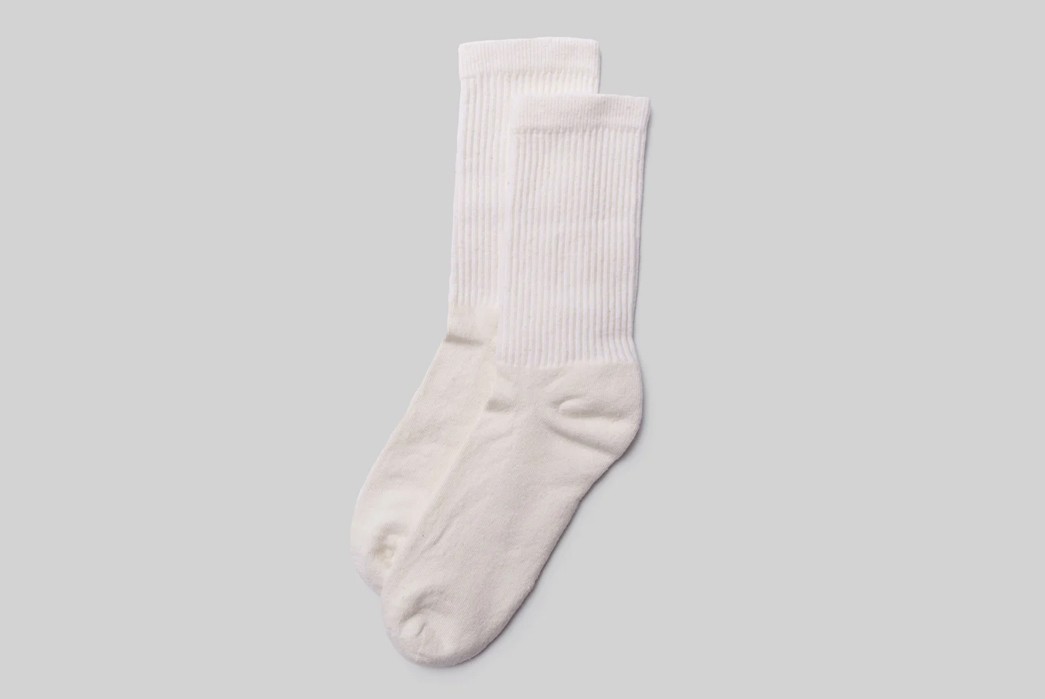
American Trench Hemp Socks, available for $22 from American Trench.
Upstate Stock
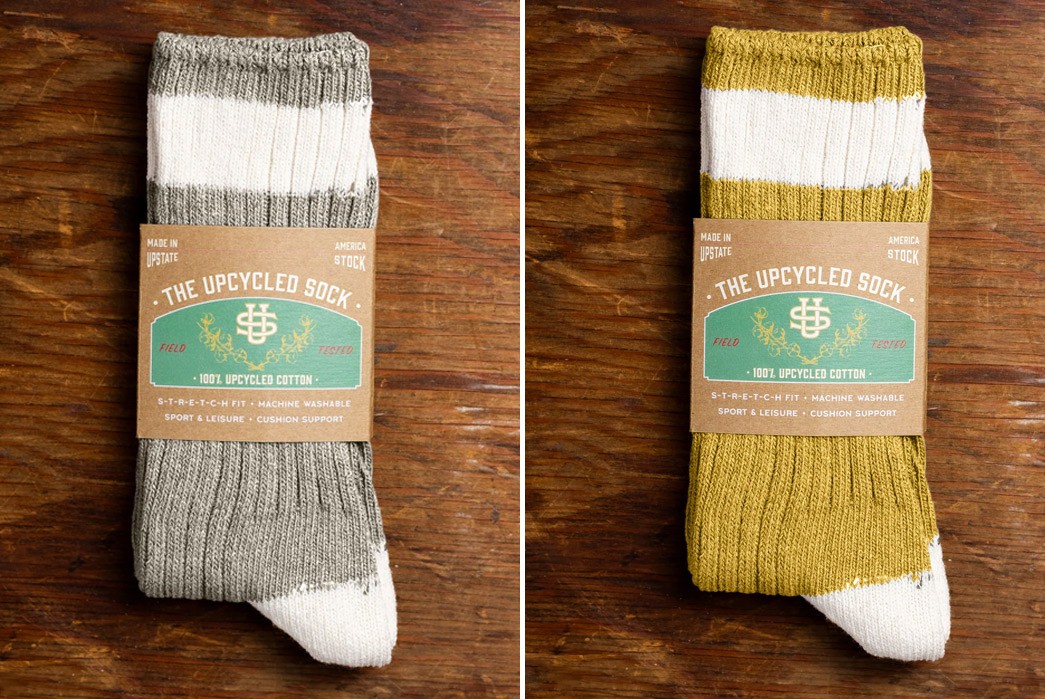
Upstate Stock Upcycled Sock, available for $16 from Upstate Stock.
Heimat
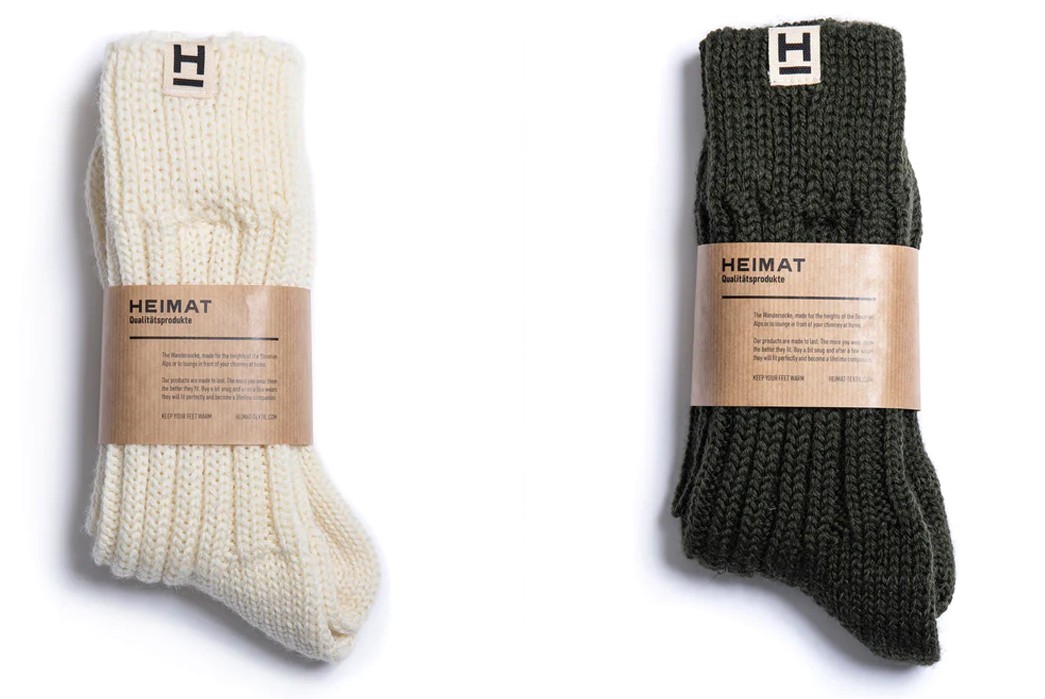
Heimat Wander Sock available for $40 from Heimat.
Anonymous ISM
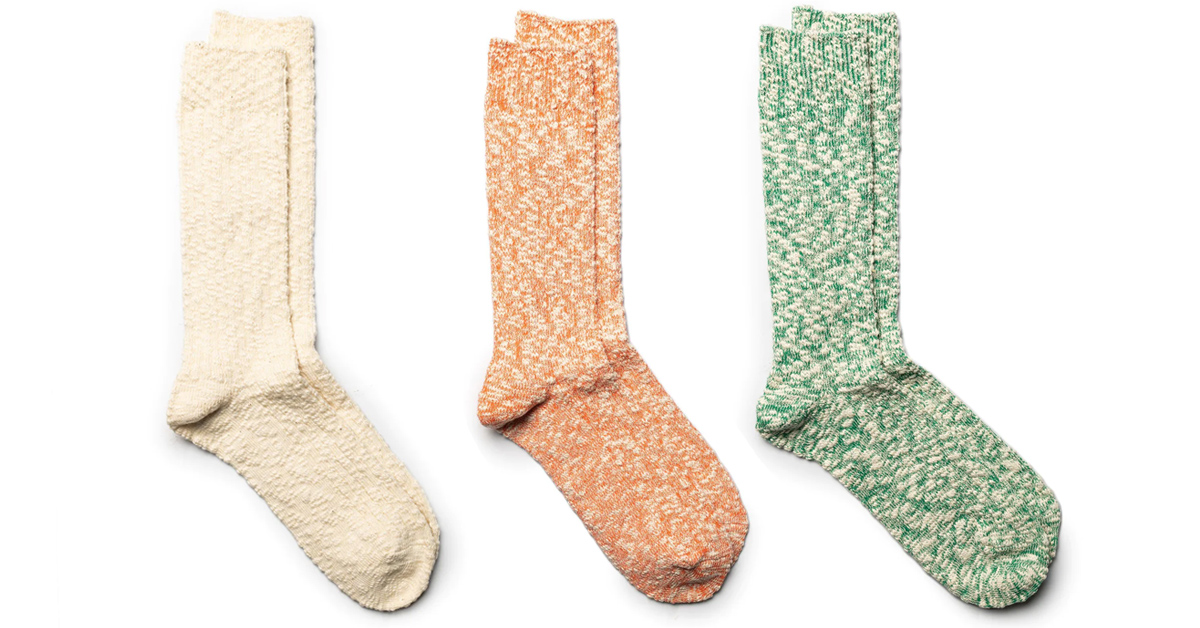
Available at Clutch Cafe priced at $36 per pair.

